How Basement Size Affects the Cost of Finishing (Pittsburgh Guide)
June 11th, 2025
6 min read
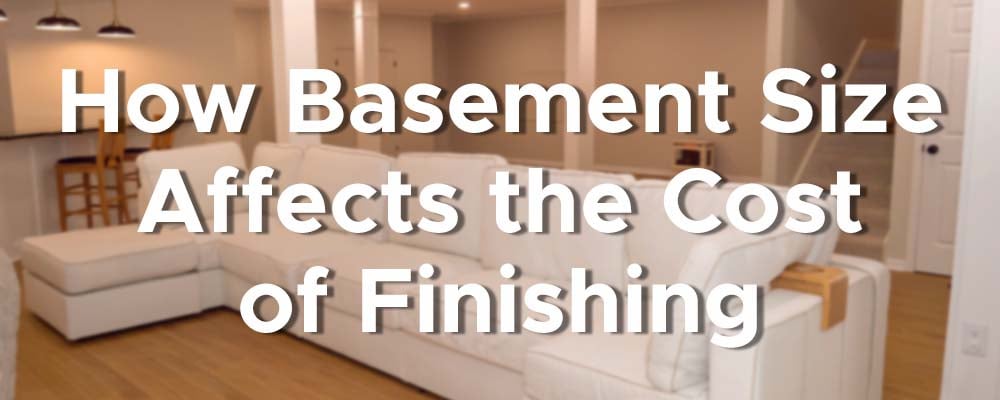
Does the size of your basement really affect the cost that much? And how do you know how much space is actually worth finishing? One of the biggest questions Pittsburgh homeowners face early on is: Do I really need to finish the whole thing? The truth is, size is the single biggest factor affecting your price, but most people don’t realize how much control they have over it.
At Energy Swing Windows, we’ve helped hundreds of homeowners in Pittsburgh turn cold, unfinished basements into bright, livable spaces, and we’ve seen how smart planning around square footage can save thousands. Whether you're aiming for a cozy office or a full guest suite, understanding your basement's size is the first step to making the right investment.
In this article, we’ll walk you through exactly how basement size impacts your cost, how to measure your space accurately, and how to decide how much of it to finish.
You’ll also see real pricing examples and learn what features can shift your project cost up or down—so you can make confident, budget-smart choices from the start.

What Does It Mean to Finish a Basement in Pittsburgh?
Before we dive into cost, let’s get clear on what “finishing a basement” really means. It’s more than just slapping up some drywall or laying down carpet.
When we talk about finishing a basement, we’re talking about a complete transformation—turning cold, concrete space into something livable and functional.
This typically includes:
- Framed and finished walls
- Flooring and ceiling installation
- Electrical and potentially HVAC work
- Possibly plumbing (if you’re adding a bathroom or wet bar)
Some homeowners choose to keep it simple with one large room, while others go for a full lower-level suite. The more features you add, the bigger the scope, which means the cost will grow.
Pro Tip: Custom touches like bars, gyms, and built-ins are amazing, but they’ll nudge your budget higher.
Why Is Basement Size the Biggest Factor in Finishing Costs?
Now that you know what goes into a finished basement, let’s talk about the biggest cost factor: size. It might seem obvious, but the bigger your basement, the higher the cost.
That’s because:
- More space = more materials: Think drywall, flooring, outlets, lighting, trim—the list goes on.
- More labor: It takes more time to install and finish a larger area.
- More complexity: Adding interior rooms doubles up on wall surfaces and electrical needs.
That said, many homeowners assume they have to finish every inch of their basement, but that’s rarely necessary.
A well-planned 400 sq ft basement can be more useful (and cost-effective) than a poorly designed 1,000 sq ft space.
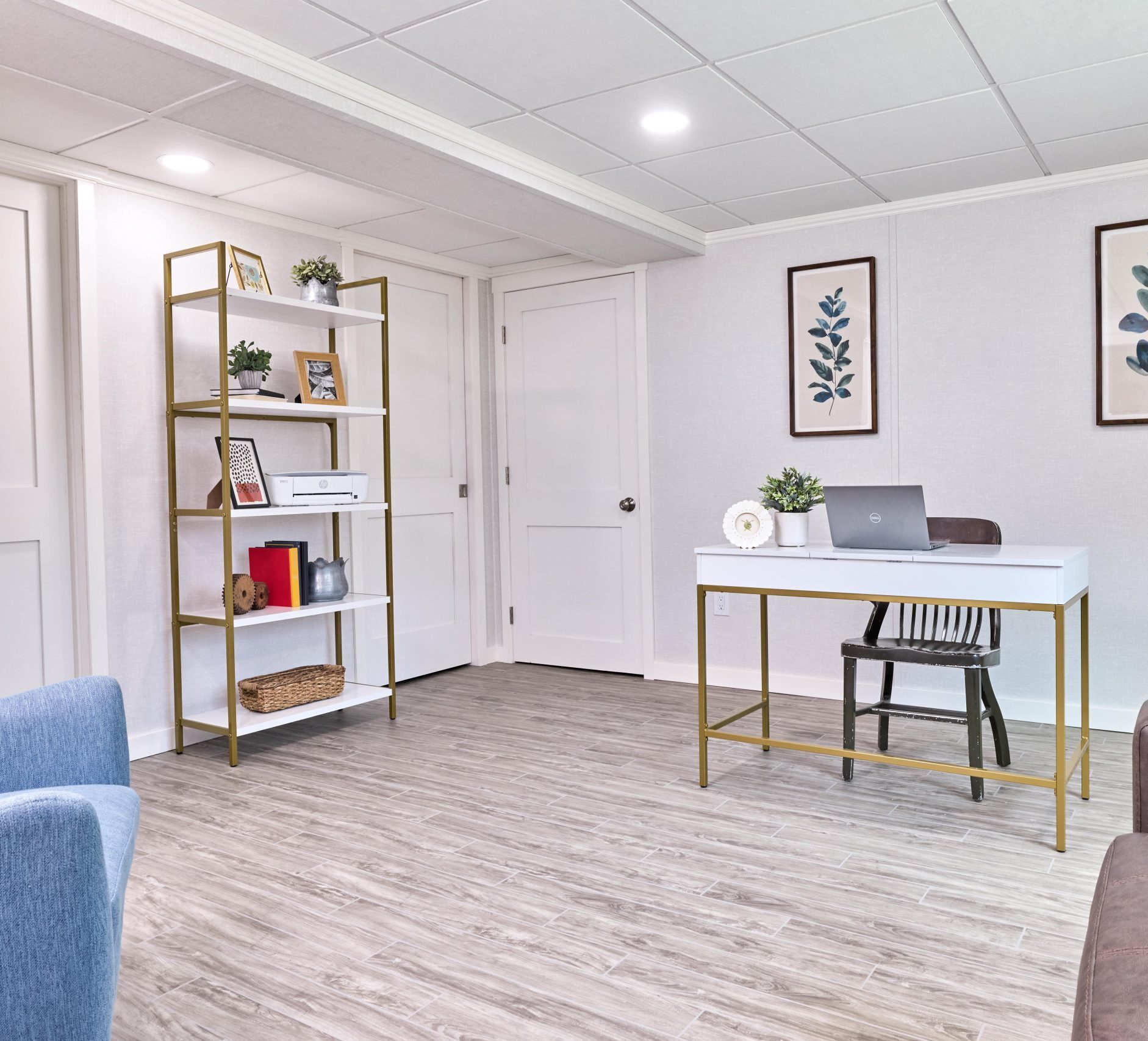
How Do You Accurately Measure Your Basement Square Footage?
Before calling a contractor or using an online estimator, it helps to know your basement’s square footage. But if you’ve never measured a space before, don’t worry, it’s easy.
Here’s how to get a quick, accurate measurement:
- Grab a tape measure or laser measurer.
- Measure the length and width of each section of your basement.
- If it’s a simple rectangle, multiply length × width.
- For odd shapes (like an L), break it down into smaller rectangles and add them up.
- Exclude areas you’re not finishing, like storage rooms or utility spaces.
Example: A 20 ft x 30 ft space = 600 sq f
Ceiling Height Reminder: If your space is under 7 ft from floor to ceiling joist, it might not legally qualify as a finished living area under International Residential Code. And if you have tall ceilings, you may need extra material (and budget).
How Much Does It Cost to Finish a Basement Per Square Foot?
So you’ve measured your space. Now the big question… what will it cost?
Basement finishing costs can vary wildly depending on how you go about it. Here’s a rough breakdown:
| Finish Type | Description | Estimated Cost/Sq Ft |
|---|---|---|
| DIY/Budget | Paint, paneling, basic electrical | $30–$50 |
| Mid-Range | Drywall, MDF trim, standard fixtures | $80–$100 |
| High-End | Premium materials, custom layouts, plumbing | $115+ |
In the Pittsburgh area, most professionally finished basements fall between $150–$200 per square foot, depending on layout and features.
What Are Real Basement Finishing Costs Based on Size with Energy Swing?
While every project is unique, here’s a look at Energy Swing’s typical price ranges based on square footage.
These estimates are based on our complete finishing system and assume a standard layout without custom features like bathrooms, wet bars, or home theaters, which can bump costs higher depending on complexity.
| Size of Basement (sq ft) | Estimated Cost | Monthly Payment (12-years) |
|---|---|---|
| 300 - 400 sq ft | $36,500 - $49,000 | $415 - $557 |
| 400 - 500 sq ft | $48,000 - $60,500 | $546 - $688 |
| 500 - 600 sq ft | $59,500 - $71,500 | $677 - $813 |
| 600 - 700 sq ft | $70,500 - $83,000 | $802 - $944 |
| 700 - 800 sq ft | $82,000 - $94,500 | $933 - $1,075 |
| 800 - 900 sq ft | $93,500 - $106,000 | $1,064 - $1,206 |
| 900+ sq ft | $103,500+ | $1,172+ |
Please note, the monthly payment amount will vary based on the rate you get approved for.
Of course, square footage is just one piece of the puzzle. There are plenty of other details that can push your project higher (or help you save), depending on how you finish the space. Let’s take a look at what else can affect your basement’s final price tag.
Why Energy Swing Uses a Moisture-Resistant System for Pittsburgh Basements
Before we dive into pricing, it’s worth noting that most traditional finishing materials—like drywall and wood—aren’t designed for basements. In Pittsburgh homes, where moisture is common, those materials can lead to long-term issues like mold or deterioration.
Energy Swing uses a patented system called Total Basement Finishing System that is made of inorganic wall, ceiling, and flooring materials that are better suited for basement conditions. They’re moisture-resistant, durable, and backed by lifetime material and labor warranties. Everything is installed by our trained, in-house team to ensure consistent quality.
What Additional Factors Impact Basement Finishing Costs?
Size sets the baseline, but it’s far from the only piece of the puzzle.
Here are some cost factors that can sneak up on homeowners:
- Bathrooms, bars, or kitchens
- Interior partition walls (more rooms = more cost)
- Custom built-ins
- Waterproofing or foundation repair
- Permits and inspection fees
The more you break up the space or add features, the more outlets, switches, and labor hours are required.
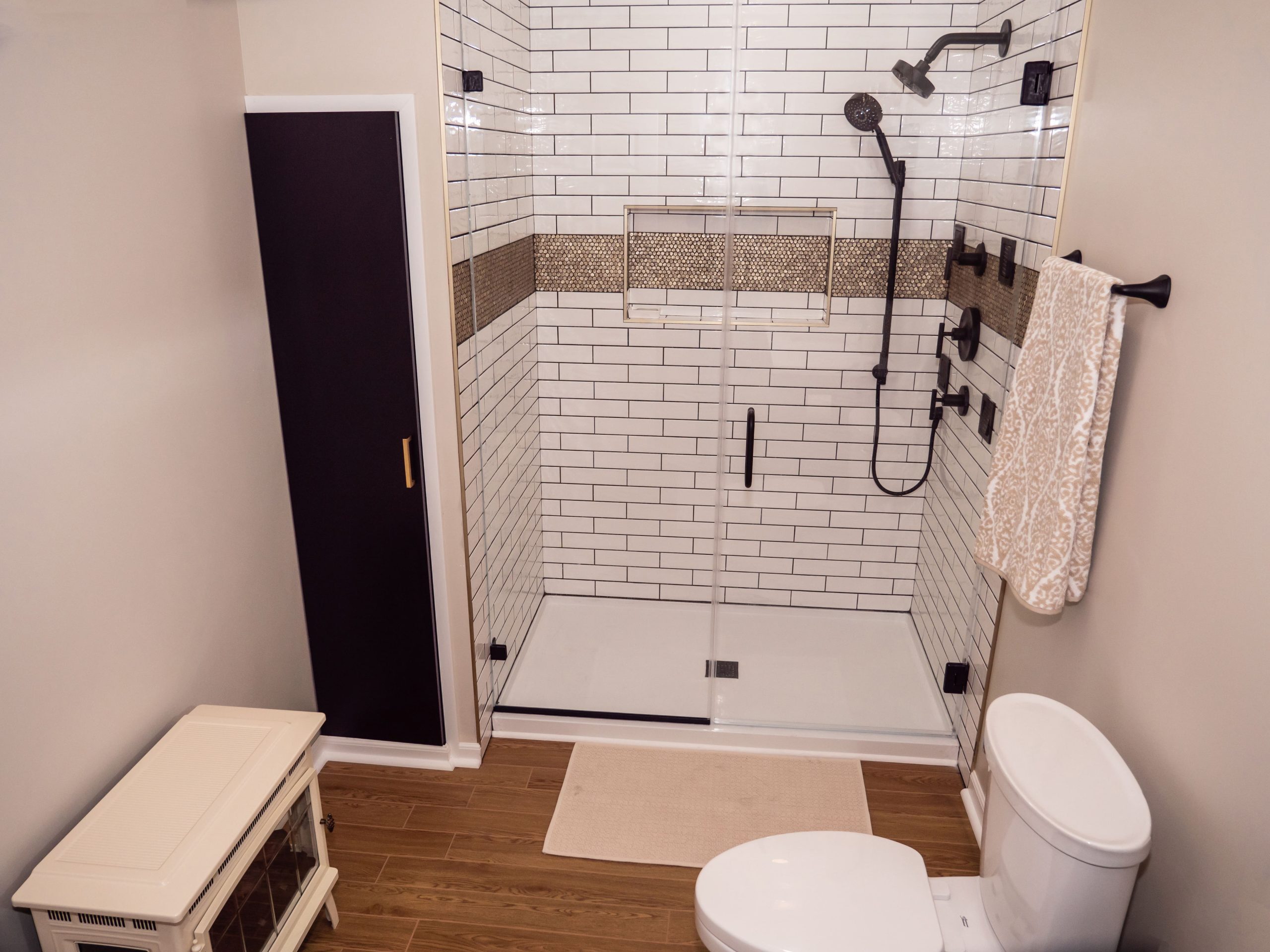
This is a basement bathroom we finished in Cranberry, PA that features a spa-like shower with lux tile work.
Can a Larger Basement Save You Money Per Square Foot?
It’s a common thought: “If I finish more, maybe I’ll get a lower price per square foot.” But that’s not always how it works.
While you would think larger basements should benefit from economies of scale, it doesn’t usually show up in the final bill. Most contractors (including us) price basement projects based on total square footage, not volume discounts.
That said, an open-concept layout is generally more cost-effective than breaking up the space into smaller rooms. With less interior walls to break-up the space, the less material (and money) is required. Plus, it keeps the room flexible for life changes.
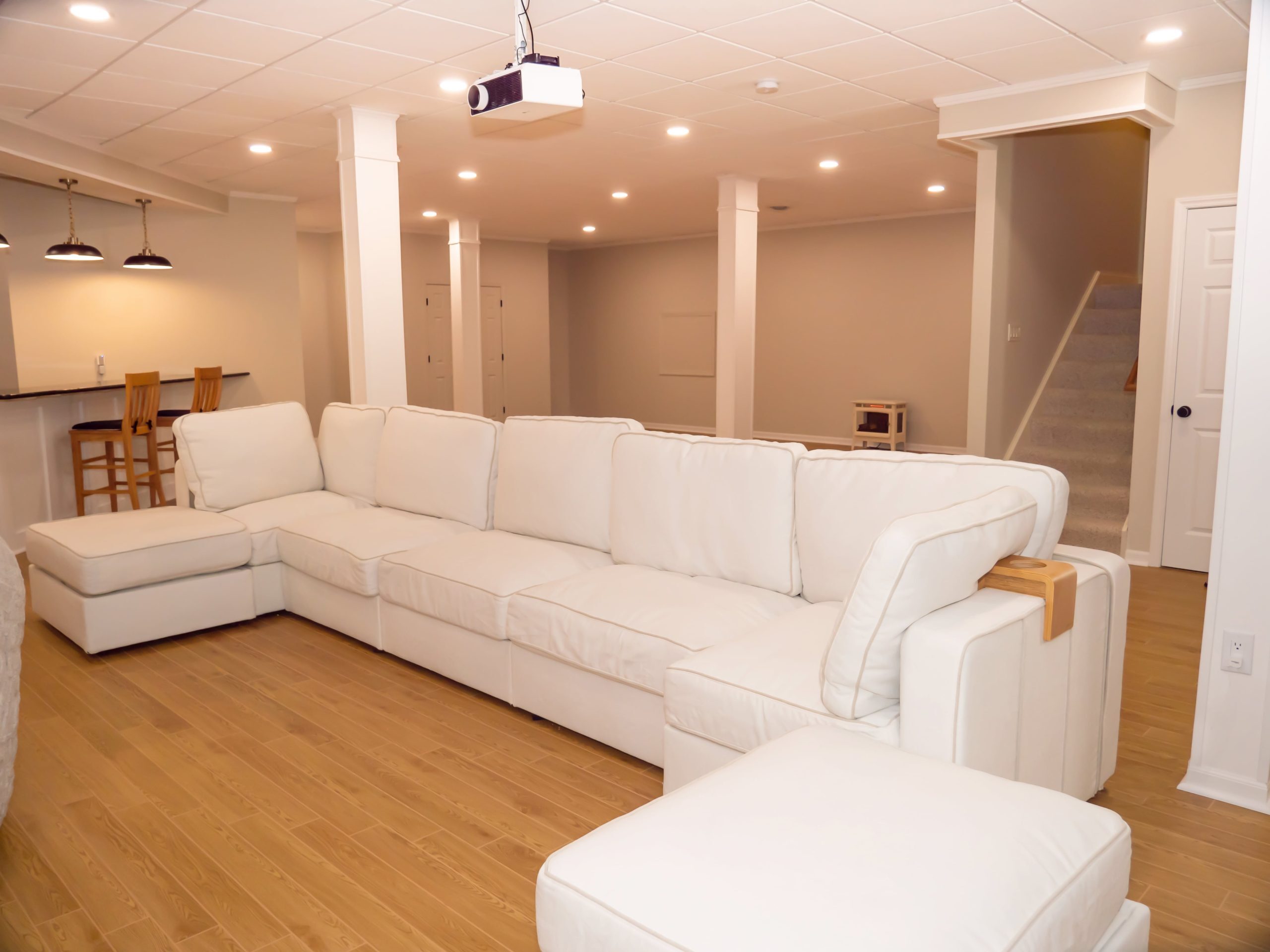
What Should You Ask a Contractor About Basement Size and Cost?
When you’re talking with a contractor, you want to make sure they understand your space, and that you understand their pricing.
Here are some helpful questions to ask:
- “Is there a minimum project size or fee I should know about?”
- “Do you price per square foot or by total scope?”
- “Can we finish just part of the basement?”
- “What layout do you recommend based on our goals?”
Some companies won’t take on smaller basements at all, so it’s worth asking upfront if your project size meets their minimum.
Is It Worth Finishing a Small Basement?
The short answer? Yes! It really just depends on your needs, not just the size.
If your basement is small but open and free of obstacles (like furnaces or water tanks), it could be a perfect fit for:
- A kid’s hangout or gaming area
- A quiet home office
- A reading nook or small TV lounge
But if the space is tight and full of immovable systems (chimneys, furnaces, low ceilings), it might not be worth the cost. Layout is just as important as square footage.
A functional layout is important for the project to make financial sense.
Local Tip for Pittsburgh Homeowners: Many older homes in areas like Squirrel Hill and Regent Square have tight, oddly shaped basements, but with smart planning, they can still work beautifully.
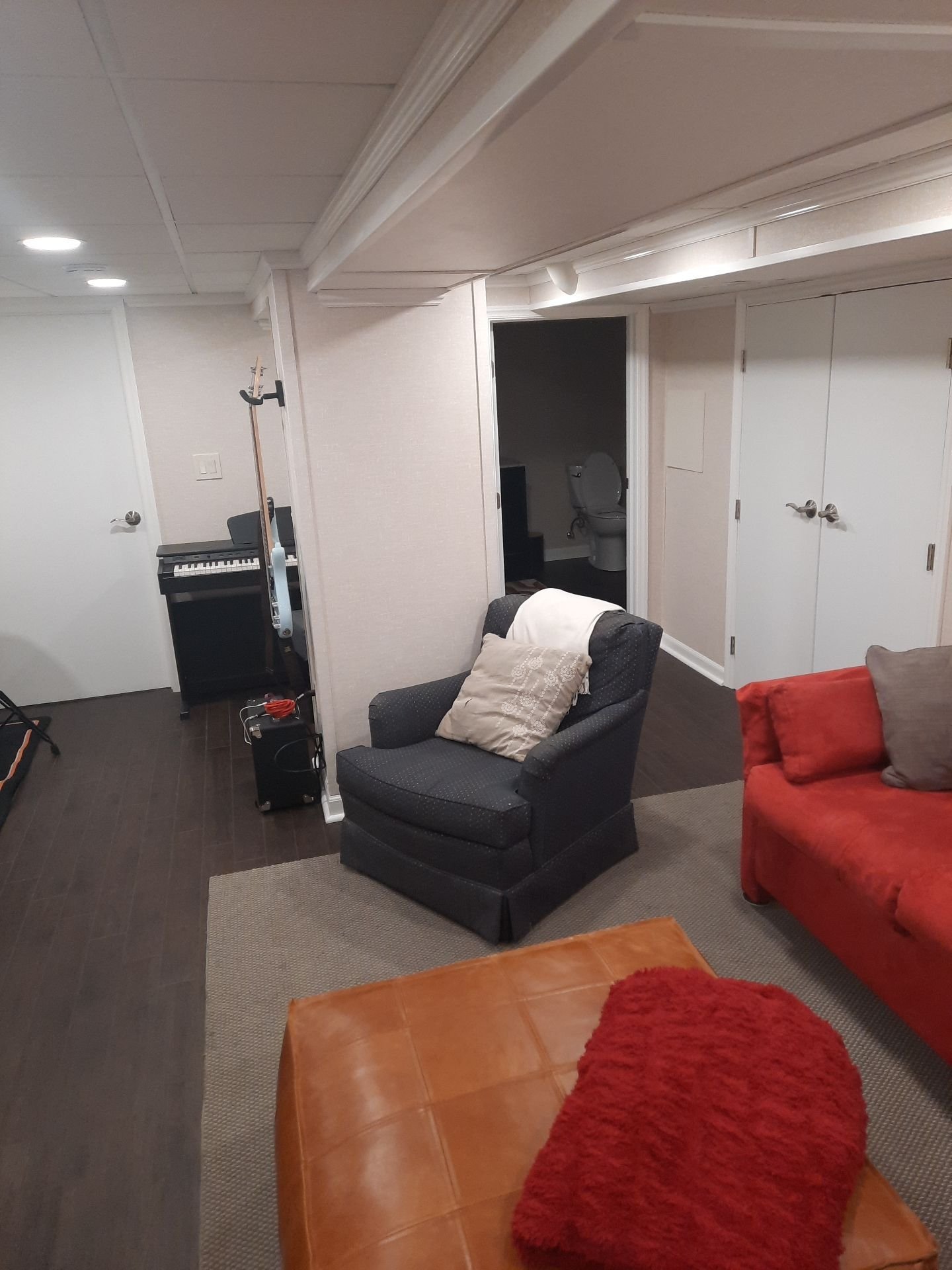
How Should You Prepare Before Getting a Basement Finishing Estimate?
Ready to get serious about your basement project? A little prep goes a long way. Here’s how to set yourself up for a smoother estimate process:
- Measure your basement (or at least your usable area)
- Have an idea of how you want to use the space (Home theater, office, guest suite, etc.)
- Discuss must-haves vs nice-to-haves with everyone involved in the decision
- Check for water issues—fixing them before finishing will save time and money
- Sketch a rough layout to visualize your ideas
- Try our basement cost calculator tool to see what your project might look like.
This prep can help your contractor give you a more accurate quote, and helps you feel more confident in your decisions.
Rule of Thumb: Don’t finish a basement just because you can. Do it because you have a clear need.
Does Basement Size Really Matter Most When Planning Your Project?
After wondering how much space you really need to finish, and whether it’s even worth the cost, you’ve likely felt overwhelmed by all the unknowns: measurements, features, pricing, and how much of your basement to tackle.
Now that you understand how basement size directly impacts cost, how to measure your space accurately, and what features can shift the final price, you’re in a much stronger position to start planning your project with confidence.
Your next step? Use our Basement Pricing Estimator to get a realistic idea of what your project might cost. From there, you can start narrowing down which part of your basement makes the most sense to finish based on your lifestyle, budget, and goals.

Zach Fontecchio is a Client Consultant at Energy Swing who specializes in Basement Finishing. Having work with homeowners across the Pittsburgh area, he understands how to find the right basement finishing solutions based on homeowner needs.
